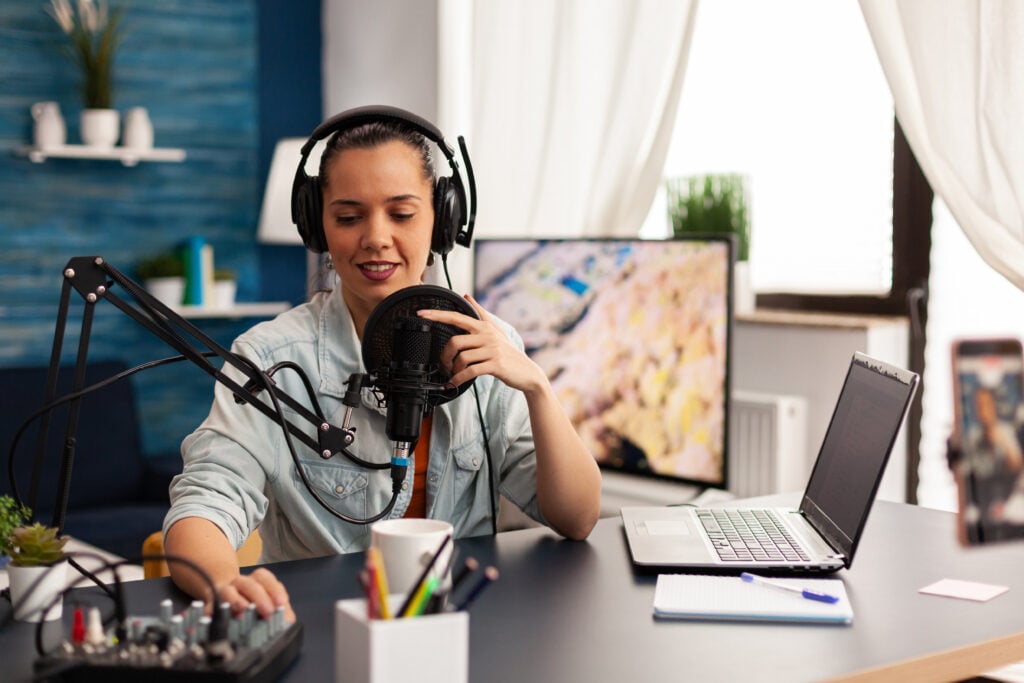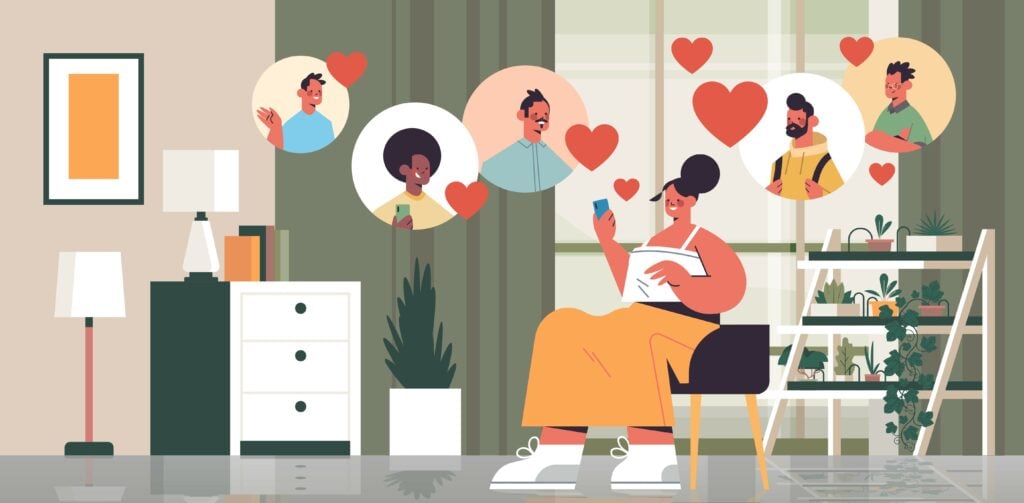How to cut through the clutter of digital hoarding
Reviewed by Stephanie Steinman, PhD, CSAC


If you use a smartphone or a computer, chances are you’ve collected photos, saved emails, downloaded apps, and kept a parade of files you think you might need again one day. Over the years, all that digital data can add up.


Digital clutter doesn’t affect your living or working space the way physical clutter does, but it can still take a toll on your well-being. If an overload of files is stressing you out, it may be a sign of digital hoarding—behavior that’s less noticeable than physical hoarding but still makes an impact.
Digital hoarding vs. physical hoarding
Hoarding disorder (HD) is a mental health condition that makes it very hard to get rid of physical stuff. While HD is widely known, digital hoarding is a relatively new phenomenon. It hasn’t been studied much, and experts haven’t yet decided if it should be considered a subtype of hoarding disorder.1
It’s worth noting that people with HD may find it helpful to take photos of items or save digital copies of documents before letting the physical versions go, but sometimes this can transfer their hoarding behavior to the digital realm.2
What drives digital hoarding behavior?
People keep digital items for a variety of reasons, though they may not be fully aware why they’re doing it.
A small study conducted in 2020 identified four major factors behind digital hoarding behavior:3
- Anxious hoarding involves saving lots of digital items you think you might need in the future—for example, screenshotting and saving every piece of potentially useful information you find online. Saving items “just in case” can offer a sense of security. Fear of losing important information can also make the idea of deleting data feel upsetting.
- Disengaged or accidental hoarding happens unintentionally. Digital items are often more convenient to save than physical ones, which can make it easy to keep everything without thinking twice. For instance, automated marketing emails can flood your inbox if you don’t delete them and unsubscribe to each individual source.
- Compliant hoarding usually involves saving files and information because it’s part of your job or you think you might need it for work down the line. This type of hoarding may or may not involve emotional attachment, but it tends to be higher among employees with data protection responsibilities.4
- Collector hoarding involves being deliberate with how you store and categorize digital items, but still struggling with excess. It might look like dozens of carefully bookmarked collections in your browser, with thousands of saved pages that you never look at.
Other factors that can contribute to digital clutter include:
- Sentimentality: People often save digital items they’re emotionally attached to, like old emails from friends, texts from loved ones, or photos from special occasions.
- Perceived value: People may believe their data or information is too important to be deleted and could be useful someday.
- Perfectionism: A need to avoid mistakes or deal with things in the very best possible way can make organizing and decluttering decisions challenging.
- Bargaining power: People may collect digital information to help them negotiate for better deals or terms in the future, using the data as leverage. A darker side of this can involve using personal or private information to blackmail someone or seek revenge.
- Preexisting mental health conditions: People who struggle with physical hoarding or who’ve been diagnosed with obsessive-compulsive disorder (OCD) may be more likely to hoard digital items.5
The mental health impact of digital hoarding
Digital clutter is somewhat normalized in today’s culture. The ubiquity of digital devices, constant access to information, and availability of digital storage make it easy to pile up too many items without noticing.
Research on digital hoarding is still in the early stages, but some studies have linked it to higher levels of stress and anxiety.6, 7 In addition, it may lead to:
- Procrastination or avoidance: You might never commit to deleting or organizing digital items because it’s easier to ignore them or to upgrade your storage.
- Financial cost: You may have to pay for more and more storage to keep all your digital files. The fee may seem cheap at first, but continuing to pay can add up over the years.
- Shame: When you realize you have an overwhelming number of files, you may feel like you’re failing at managing your life.
- Lost productivity: Finding specific items or files in an overload of data can be time-consuming. In work settings, disorganization and difficulty locating information can lead to inefficiency, miscommunication, and missed deadlines.
- Stress around personal data: Digital hoarding can involve a lot of personal information, which can leave you vulnerable to cybercrime and identity theft if those details fall into the wrong hands. These outcomes can be very stressful, as can worrying about the possibility that they might happen.
- Environmental consequences: Even digital data has to be stored somewhere. Servers and related equipment require considerable amounts of energy for cooling and upkeep.8
How to address digital hoarding
Saving lots of files or data by habit doesn’t necessarily mean you have a problem, but if it’s causing you stress, anxiety, or other concerns, here are a few tips that may help:
Ask yourself why you feel the need to save so many items. Are you trying to fill a void, control a situation, or prepare for future uncertainty? Getting to the root of your motivations can help you better address them.
Shift your mindset. Try to exchange the fear of deleting items for a sense of accomplishment and pride in organizing your system. Think about times you’ve deleted digital items in the past. How did it affect you? Chances are you were able to move forward without major consequences, which shows that you have the ability to let things go.
Set realistic expectations. You don’t have to tackle everything at once. Start by making a list of what you need to organize and create folders or labels for how you’ll sort them. An easy way to start is to create a folder or label for keeping, deleting, and archiving items.
Set aside time to declutter. As with any task, dedicating a specific amount of time to it can help you stay focused and prevent procrastination. You might try scheduling half an hour each week to work on decluttering your digital space.
Practice letting go. Start by deleting the most nonessential items. Take a break as you need one, then come back when you’re ready. Gradually increase the number of items you delete as you become more comfortable with the process.
Create a system for on-the-fly organization. Create a system or use a tool that allows you to quickly add new items into folders or labels as you acquire them. For example, you could use a tagging system to organize files based on importance and frequency of use.
Establish a time limit for keeping items. Set a specific time frame for hanging on to digital items, such as six months or a year. Once the limit has passed, reevaluate whether you still need the item and delete it if it’s no longer relevant.
Back up important files. Regularly back up essential files and information to an external hard drive or cloud service. Knowing your important data is safe can help reduce anxiety about losing it.
Consider a digital detox. Take periodic breaks from technology to recharge mentally and emotionally. This can help you gain perspective on your digital habits and manage them better.
Get extra support. If you suspect your digital hoarding is having a negative impact, consider reaching out for professional help. Talking with a therapist can help you develop strategies to address the issue.
Each of us has a unique relationship with technology and digital clutter. By becoming mindful of how it affects us, we can take steps to manage it and live healthier lives.

Sources
1 https://www.ncbi.nlm.nih.gov/pmc/articles/PMC4600778/
2 https://www.ncbi.nlm.nih.gov/pmc/articles/PMC6785915/
3 https://academic.oup.com/iwc/article-abstract/32/3/209/5898270/
4 https://www.sciencedirect.com/science/article/abs/pii/S0747563219300469/
5 https://journals.sagepub.com/doi/10.1177/2055207619882172
6 https://www.researchgate.net/publication/327098318_Is_Digital_Hoarding_a_Mental_Disorder_Development_of_a_Construct_for_Digital_Hoarding_for_Future_IS_Research/
7 https://www.sciencedirect.com/science/article/abs/pii/S0378720622001094/
8 https://www.forbes.com/sites/ciocentral/2011/03/25/the-problem-with-packrats-the-high-costs-of-digital-hoarding/
About the author
Elise Burley is a member of the therapist.com editorial team. She has more than a decade of professional experience writing and editing on a variety of health topics, including for several health-related e-commerce businesses, media publications, and licensed professionals. When she’s not working, she’s usually practicing yoga or off the grid somewhere on her latest canoe camping adventure.
Related articles

Teletherapy and the promise of access
Once hailed as the path to accessible mental health care, has teletherapy...

Are video games actually bad for you?
Video games offer some mental health benefits, but excessive gaming can lead to...

Can therapy help when it’s not your own?
Podcasts like “Dear Therapists” let millions of listeners experience...

The psychological effects of dating apps
Dating apps can help you find your person, but they can also be hard on your...
